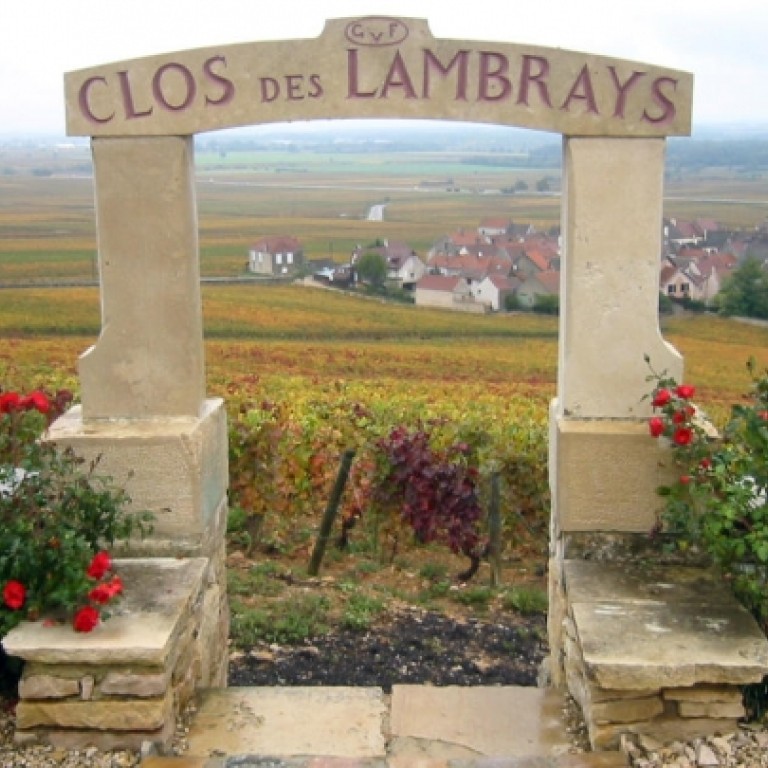
Small vineyard leaves a plot to be desired
May in Burgundy has been sodden, in body and spirit, capping six months that the Dijon weather station tells us has seen the least sunshine for 60 years. A French expression says " " which translates rather sweetly as "my spirits are down in my socks", or more prosaically "feeling down in the mouth". I must have heard it from five winemakers over just two days.
But standing at the top of the slopes of Clos des Lambrays in Morey-St-Denis, you can feel the energy rising from the land. On the clearest days you can see Mont Blanc, but today the sky is grey and overcast.
The stony soil that cradles the vines is bone dry. Farther down the hill, machines are unable to enter the vineyards because of layers of mud from the latest round of rains, but here after walking up and down the rows I had just the tiniest trace of limestone dust on my shoes.
Clos des Lambrays is the largest single plot of the highest designation grand cru vines in Burgundy, at 8.7 hectares, although made up of three distinct microclimates. I'm here with Thierry Brouin, director and winemaker of Domaine des Lambrays since 1979.
He's stayed with the estate through two owners - first hired by the Saier brothers, Fabien and Louis, then staying on when the German Freund family bought it in 1996.
"Morey is not the best known of the Côtes de Nuits villages, but it's wonderful," he says.
"It was known as the black sheep for years. It's three times smaller than Chambolle or Gevrey and many producers here preferred to concentrate on their vines in those more prestigious appellations. But I love the balance in the wines here," Brouin adds.
The Lambrays plot looks like a steep drop from where we're standing, by the famous gate that marks the northernmost point of the walled clos. No other grand cru in Morey extends as far up the hill, and horses are used to plough much of the land, as some parts are too steep for even small machines to enter. But head over to the neighbouring estate of Domaine Ponsot and you can see the land undulate.
This is what gives so many different exposures to the vines, with contrasting currents of air flowing over them. Each area needs different work through the season, and each is harvested differently. It is what gives Clos des Lambreys its complexity.
Clos des Lambrays is almost a monopole - those single-owned Holy Grail vineyards of Burgundy, a region where many vineyards are split between dozens of wine growers. Even this one, after the French Revolution, was divided between 74 individual growers, until brought back together again by 1868.
But from the top of the hill you can see a tiny patch of vines that is walled off from the rest. This handkerchief of vines belongs to Domaine Taupenot-Merme, and was planted by the family in 1975. The family has 430 square metres of vines close to the house, producing less than 200 bottles per year.
"We don't hide the fact that we would love to buy those vines and join the two parts of the property together again." says Brouin. "It is a constant concern that it will be bought by someone else, who will offer an un-refusable amount of money. The price pressure on Burgundy vineyards is getting too intense."
Clos des Lambrays itself is a rare prize - a vineyard of serious size for the area, in an (almost) single stretch of vines.
"Albert Freund bought the estate for €15 million in 1996. It is now worth I would estimate €100 million. My greatest worry is that it will be divided up again, because the strength of this wine is its complexity. If different winemakers all bottle their own Clos des Lambrays again, it will have lost its soul".
Next door, at Taupenot-Merme, the owners are just as keen to preserve their part of Clos des Lambrays. The house that offers shelter to the dozen rows of vines is lived in by Virginie Taupenot-Daniel's parents, but it is Virginie and her brother Romain who are in charge of the day-to-day running of the operation.
They are the seventh generation of the family to make wine in the Côtes de Nuits.
This is also a large estate, but follows the typical Burgundy model of bottling small plots of many appellations. The wines have the soft fragrant elegance that is typical of the best Morey-St-Denis, the Domaine des Lambrays version having a touch more dense black cherry.
It seems highly unlikely that Taupenot-Merme will be selling soon. "These vines are part of our family history," says Virginie.

